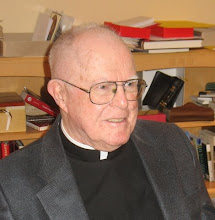A CARDINAL CONFRONTED
Closing a parish church is one of the most difficult decisions to be faced by a bishop. The New York Times of January 28, 2007 described the pain felt by parishioners on hearing of the closing of East Harlem's Our Lady of Angels church. Several parishioners were quoted as to how much the parish meant to them. One can only sympathize with their sense of loss and the rupture of the strong spiritual and community bonds formed over the years. But one can only object to a group of Bostonians who, as reported in the New York Times, have come down to provide aid and advice to parishioners as to how to confront their archbishop by use of the media, demonstrations, and law suits. These outsiders may have no awareness of the long planning process that Cardinal Egan has undertaken over several years, utilizing professional planners and extensive consultation with vicars, local clergy, and parishioners throughout the affected areas. Provisions have been carefully made for adequate services for those whose churches are to be closed. Protests may well be justified where arbitrary decisions have been made with little or no consultations with the locals who are affected. That is not the case here.Church authorities would be remiss, if in the face of enormous demographic changes and shortage of clergy, they did not act to best utilize available resources where the need is greatest, rather than simply accept a status quo. Protests by locals, while understandable, are none the less ill-considered in light of what has gone on. The entry of outsiders, who neither know nor care about the extensive planning process undertaken, is simply unacceptable. The Cardinal Archbishop has acted with the kind of transparency and consultation that may not have been experienced by the outsiders.Another confrontation faced Cardinal Egan by way of an article, "The Cardinal's Sins" in the current issue of "New York" magazine. Allegations critical of the Cardinal's administrative style that surfaced in an anonymous letter of a couple of months ago and several of his actions were rehearsed again. Among these were his abrupt dismissal of some seminary faculty members and the sharp hostility that he showed to members of the bishops' own National Review Board as they attempted to carry out their mandate. Remember NRB member, former Oklahoma Governor Frank Keating labeling some bishops as "mafia types". When I gave a deposition before the Board, one of its members, a prominent lawyer used by President Bill Clinton, exclaimed to me that he could not understand the hostility shown by many bishops to Board members, who gave up considerable time and income to help the bishops themselves. However these characterizations and actions may be appraised, nothing in them approaches in the slightest degree the popular or theological notion of "sins". Was the editor's title, quite unjustified by the content of the article, chosen because it was sensational, more attention getting, and more revenue producing? In any event, what the article reports should not in any way be labeled "The Cardinal's Sins". Rather "New York" magazine has committed a journalistic sin!
Posted by Msgr. Harry J. Byrne, JCD at 12:56 PM 0 comments
Subscribe to: Posts (Atom)
Blog Archive
▼ 2007 (1)
▼ January (1)
A CARDINAL CONFRONTED
About Me
Msgr. Harry J. Byrne, JCD View my complete profile
Posted by Msgr. Harry J. Byrne, JCD at 12:56 PM 0 comments
Subscribe to: Posts (Atom)
Blog Archive
▼ 2007 (1)
▼ January (1)
A CARDINAL CONFRONTED
About Me
Msgr. Harry J. Byrne, JCD View my complete profile


0 Comments:
Post a Comment
Subscribe to Post Comments [Atom]
<< Home